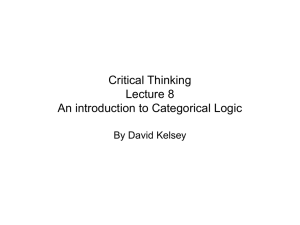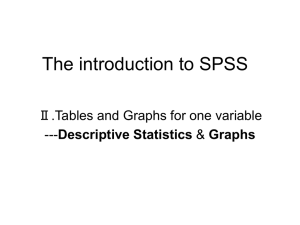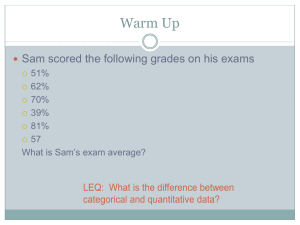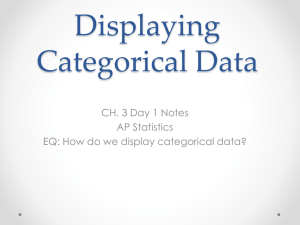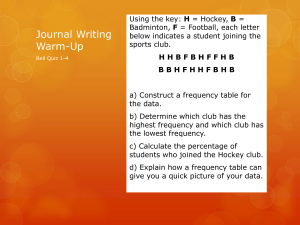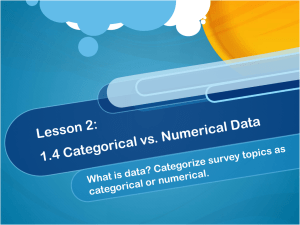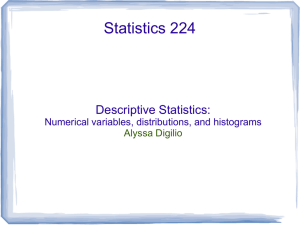A-Claim - Erick Ramirez
advertisement
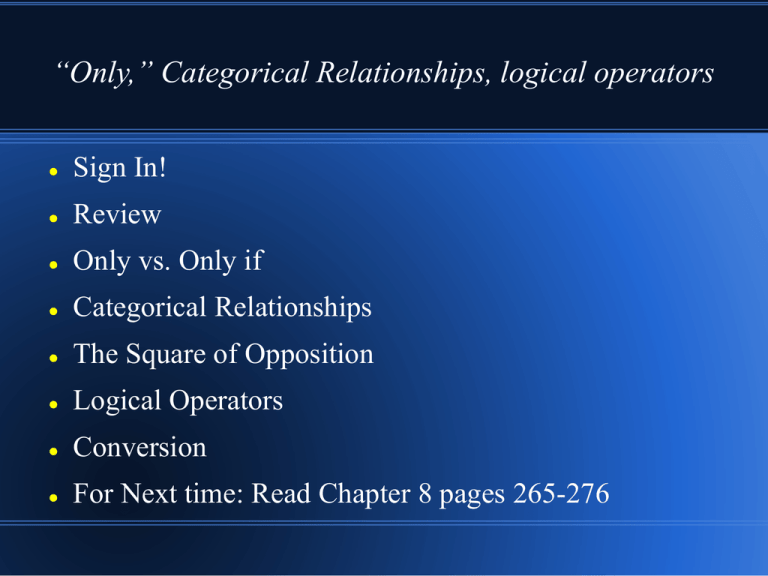
“Only,” Categorical Relationships, logical operators Sign In! Review Only vs. Only if Categorical Relationships The Square of Opposition Logical Operators Conversion For Next time: Read Chapter 8 pages 265-276 Quick Review We are now focusing on translating sentences into categorical claims We have already had a lot of practice understanding the differences between the four different types of categorical claims: A-Claim E-Claim I-Claim O-Claim Quick Review Some sentences are harder to translate than others Indicator words like “most” or “many” or “a few” seem to be telling us different things about the relationships between different categories For our purposes the following A-Claim is true: ALL of these words Are words that would be translated as _________? If you see one of those words you know you are dealing with an I or O-Claim Only Things are a little more complicated with the indicator word “only” “Only students may use the gym” “Critical Thinking students are the only students who can avoid cognitive biases” “Only” can indicate different relationships between groups depending on whether it is found by itself or with the word “the” What is the word “only” saying in the two examples above? Only (more) Whenever we see “only” by itself in a sentence then we know we are being introduced to the predicate term in an A-claim Only bananas are fed to the monkeys Whenever we see “the only” in a sentence we know we are being introduced to the subject term in an Aclaim Red meat is the only thing fed to the lions Example Franklin Delano Roosevelt once said: “The only thing we have to fear is fear itself” What are the subject and predicate terms of this sentence How would we translate Roosevelt's sentence into a categorical claim? Curious facts about Categorical Claim types If we diagram the four claim types (A,E,I,O) we can notice that they are related to one another in different ways It is impossible for both an A-Claim and an E-Claim to be true at the same time (about the same groups) A-Claim: All Chihuahuas are cute E-Claim: No Chihuahuas are cute This makes A and E-Claims contraries. These two claim types cannot both be true together What about I and O-Claims? More Curious Facts I and O-Claims are related to one another as well I and O-Claims can both be true together but they can never both be false I-Claim: Some mammals are egg layers O-Claim: Some mammals are not egg layers This is because we will be working under the assumption that the groups we use in our claims are not empty Because of this, I and O-Claims are called subcontrary claims One More Curious Fact Contrary claims cannot both be true but they can both be false Subcontrary claims cannot both be false but they can both be true But A and O-Claims AND E and I-Claims have a different relationship to one another: they never have the same truth value If an A-Claim is true then the corresponding O-Claim must be false (and vice-versa) For this reason A & O-Claims and E & I-Claims are called contradictory claims The Square of Opposition Inferences based on Categorical Claims If we keep in mind the relationships between different kinds of categorical claims then we can infer the truth values of other claims once we know the truth value of one categorical claim For example: if we know that the A-Claim “All squirrels are creatures with bushy tails” is true then we know that the EClaim “No squirrels are creatures with bushy tails” is false We know this because A and E-Claims are contraries, they cannot both be true We also know that the I-Claim “Some squirrels are creatures with bushy tails” is also true Inferences based on Categorical Claims Similarly, we know that the two subcontrary claim types (I and O) can never both be false If we know that the O-Claim “Some mammals are not cute” is false then we know that its subcontrary I-Claim “Some mammals are cute” must be true because they cannot both be false The same goes for contradictory claims. If we know that the O-Claim “Some asparagus plants are not green things” is true then we know that the contradictory AClaim “All asparagus plants are green things” is false Quick Review Knowing the truth value of one of the categorical claim types helps us to infer the truth values of some of the other claim types A-Claim: if true we can infer that the E-Claim and OClaim are false and the I-Claim is true A-Claim: if false we can infer that the O-Claim is true but we can't say much more with certainty The square of opposition can help us see those relationships and we will need them when we start doing proofs for validity Practice If we know that the A-claim “all circus clowns are scary things” is true, what can we infer about the truth values of the other categorical claims? It might help to draw the Venn Diagram of the AClaim to see what it rules out or rules in What if we knew that “Some people are people who hate pizza”? What truth values could we infer from that claim? Here again, it might help to draw the I-Claim diagram Logical Operators A logical operation is a way of translating a claim into another claim without changing the meaning or truth value of the claim There is a corresponding sense of this process in mathematics We can say that x + y = z is equivalent to y + x = z, for example, without changing the meaning of the expression or the truth value of the equation In logic, being able to do these operations will be extremely useful when we construct proofs Conversion The first equivalency we will look at is conversion To find the converse of a claim all we have to do is switch the order of a claim's subject and predicate terms Some claim types are equivalent to their converses. This means that the truth value and meaning of a claim is not changed by translating it into its converse All E and I-Claims are equivalent to their converses For example, diagram these two I-Claims: Some elephants Are large animals Some large animals Are elephants Why Should We Care? The important thing about logical operations like conversion is that we can always safely replace any I-Claim in an argument with its converse claim without changing the argument The same goes for any E-Claim For example: No ghosts Are beings who exist No beings who exist Are ghosts When we check the Venn diagram we see that both of these two claims are equivalent as well Complementary Terms A complementary term refers to a group that excludes all members of another group For example: [Students] is a group; its complementary term would be a group that excludes every member of the [Students] group We might call that group [Non-Students] Every group in a categorical claim has a complementary group [Bananas]/[Non-Bananas]; [Things that eat pizza]/[Things that do not eat pizza]; [boring things]/[non-boring things] Obverse Claims ALL categorical claims (A,E,I,O) are equivalent to their obverse claims An obverse claim can be found by first looking at the claim to the left/right of a claim type on the Square of opposition THEN switch the predicate term with its complementary term Voila! This gives you the obverse claim Examples For the following claims, find the obverse claim All monkeys Are creatures who eat bananas Some ants Are dangerous things No circus clowns Are truly scary things Here again we can check the Venn diagram to make sure that each claim and its obverse claim are equivalent For Next Time Read Chapter 8 pages 265-276
